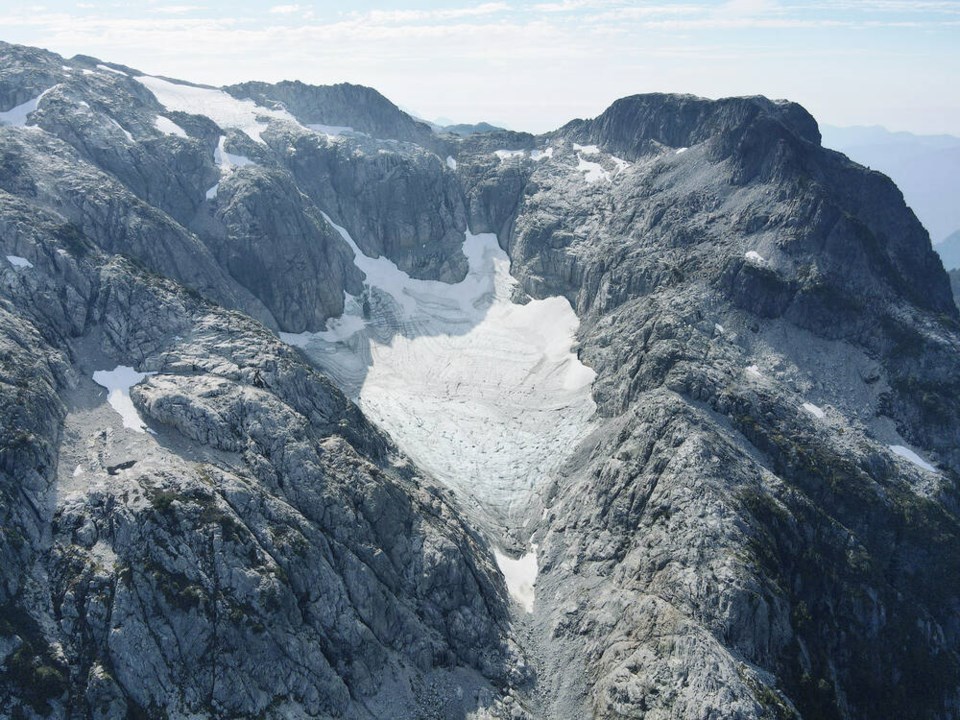The CRD reported last week that the combined levels of the Sooke and Goldstream reservoirs have reached above 92 per cent. That’s up from 86 per cent a month ago and 68 per cent in early December.
With the on-again, off-again rain and showers over the last couple of months, Victoria’s drinking-water supply continues to slowly replenish.
Our region, as well as much of the rest of southern 91原创 Island and the metropolitan 91原创 area, relies year round on the accumulated runoff from winter rains and surface snowmelt for our drinking water.
However, most communities in B.C. draw on glaciers in their watersheds for water.
And those year-round storehouses of water are disappearing. The latest estimates indicate that, of the approximately 17,000 glaciers across the province, about 80 per cent will disappear by the end of the century, thanks to climate change.
Indeed, by the year 2100, the majority of Earth’s remaining glacier ice will exist in southeastern Alaska, the Northern Coast Mountains, Yukon, the northeastern 91原创 and Russian Arctic and mountains that fringe the Greenland and Antarctic ice sheets, researchers say.
The study uses the newest climate projections reported in the Intergovernmental Panel on Climate Change Assessment Report, improved physical representations of glaciers and new approaches to calibrate physically based models that simulate the response of Earth’s glaciers to future climate.
The results show that, even if humans manage to lower our collective greenhouse-gas emissions, glaciers around the world will continue to lose substantial mass until about 2040.
What happens after, however, depends on how successful we are at lowering our emissions and slowing climate change.
With climate change messing with the jet stream, ocean surface temperatures and ocean currents, we’re not getting the snowfall during the critical winter months necessary to replenish our glaciers. In addition, heat waves in the spring and early summer are becoming more frequent, causing unseasonably early melting even at high altitudes.
A study published in early January shows that a one-two punch of sunny heat waves in the Rocky Mountains and along the Cascade Range in April 2021 caused a record melt and added to severe water shortages across the western U.S. in subsequent months.
Follow those events up with the June heat, and the stage was set for extreme drought and out-of-control wildfire across much of the region.
Glaciers cover only about two per cent of B.C. That isn’t much real estate, but mountain ice packs have an outsized impact on what happens elsewhere in the province.
They help to moderate stream and river flow in much of the province throughout much of the year. They hold back water during the spring, lowering the risk and extent of flooding at a time when snow and rain at lower altitudes are filling watercourses. And they release that stored water in the summer and fall, when water levels would otherwise drop, helping fish, forests, farmers, city dwellers and industry.
Without glaciers’ contributions to B.C. creeks, rivers and lakes, we’ll see more and more dry river- and lakebeds in coming years, with all the problems that that causes.
Maintaining flow in rivers and streams means the surrounding landscape is also moister. Rivers are more than the water that visibly flows between their banks. They flow underground through the soil and gravel of the surrounding terrain.
Moist soil means well-watered forests and grasslands. That builds in some resistance to wildfire.
The cold meltwater influx from high-mountain glaciers during the warmer, drier months keeps stream and river temperatures at lower, warmer elevations chilled. Cooler water is necessary for salmon. It also moderates air temperatures nearby, which helps to lower fire risk in the immediate area.
And, of course, reliable streamflow throughout the year allows communities to provide drinking water to communities. Without glaciers to feed the system, boil-water advisories could become more frequent and more widespread, and more pressure will be put on aquifers, many of which are already under stress in parts of the province.
In other words, any ecosystem or human community in the province that relies on a glacier-fed watershed will feel the impact of the loss of B.C.’s glaciers.



